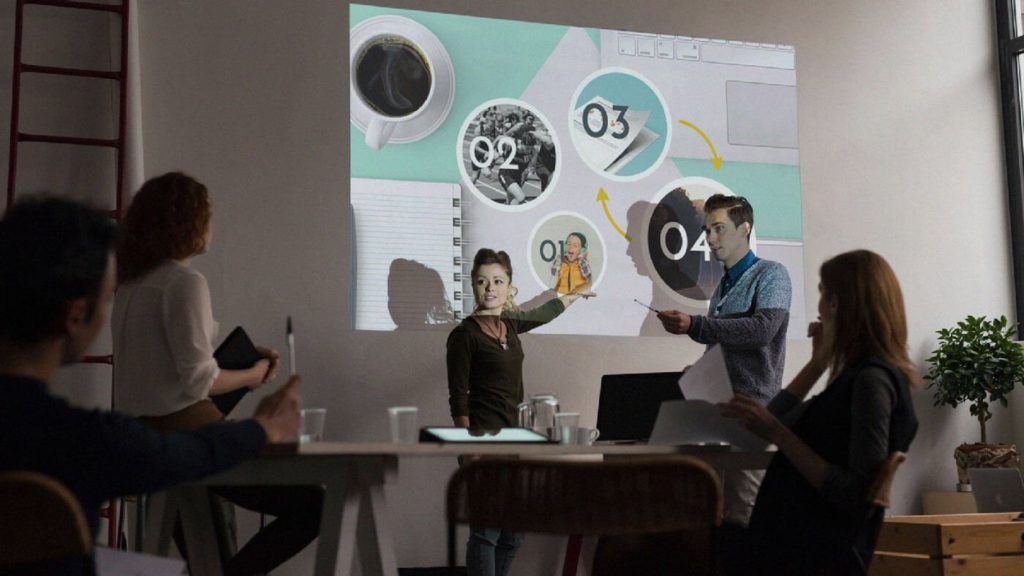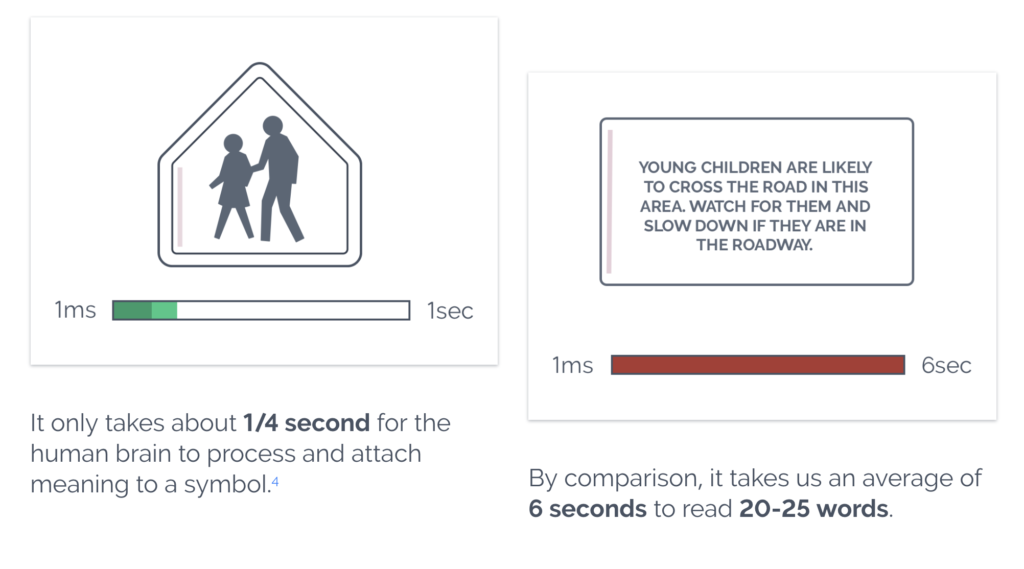
Have you ever looked out into an audience mid-presentation and realized that half of them were staring at their smartphones or nodding off to sleep? It’s a demoralizing feeling. For people to pay attention and remember your core message, they must be engaged with your presentation. Fortunately, there are several easy steps you can take to achieve this. Here are our top 10 presentation tips to help you engage your audience.
1. Start strong
Great presenters catch their audience’s attention immediately and hold it for the entire presentation. You only have a few minutes to convince your audience that your message is interesting and that you’re worth listening to. Within the first couple of minutes, tell them exactly what they’re going to take away from your talk. Why is it worth paying attention for the next 20 minutes or so?
Introduce yourself and establish your credibility, but don’t spend too much time on reviewing the agenda. Be confident, and give off an air of excitement and enthusiasm for the topic. Tell a quick joke to get people laughing. Use catchy headings, impactful visuals, and an attention-grabbing presentation design to get your audience’s interest. You can also use an interactive presentation tool such as Prezi to wow your crowd by zooming into a key point on your presentation. This is your first and most important opportunity to engage them — don’t squander it.
2. Ask questions
One of the best ways to keep your audience engaged throughout your presentation is to ask questions. This will turn them into active participants instead of passive listeners, and can be achieved in several different ways, including:
- Asking for people’s opinions
- Asking them to identify trends or a solution to a problem you present in one of your frames
- Requesting physical help with a demonstration
- Conducting polls via a live digital polling tool
- Asking provocative questions
- Asking people to raise their hand if they’ve ever done XYZ
Whatever you do, make sure you’re interacting with the audience at least every seven minutes to keep their attention.
3. Use compelling visuals
Incorporate captivating images into your next presentation. Most people are visual learners, processing images within as few as 13 milliseconds, so keep their attention by leaning on visual aids such as photos, charts, graphs, infographics, videos, and animations. Meanwhile, it takes much longer to process a block of text.

Rather than placing a long list of bullet points in each presentation frame, communicate your message via an image and a few words or lines of text. Your audience will find this far more interesting and memorable than 30 minutes of straight talking and giant blocks of text.
Just make sure you’re using relatable and high-quality images and illustrations, not cheesy stock photos or clip art. Weave them into your presentation cleanly and clearly. Make them large enough that your audience can read and understand them. Need help finding an attention-grabbing background for your design? Here are some of our favorites for you to center your visual metaphor around.
4. Make eye contact
One of the top presentation tips for connecting with an audience is to make eye contact with people. Smile and focus on individuals in the audience. Yes, you’ll need to glance at your presentation or computer screen occasionally as you navigate through your talk. But don’t turn your back on the audience, and don’t stare at your screen and read off a script.
This age-old public speaking tip can help you build rapport with your audience and also calm your nerves. Eye contact will allow your audience to better connect with you and your topic.
5. Use proper lighting
To make eye contact in the first place, it’s important to make sure the lighting in the room or auditorium isn’t so low that the audience can’t see your face, eyes, and body language. To truly engage your audience, you’ll need their focus on you. Dim the lights just enough that people can see your presentation screen clearly. Most screens today are of high enough quality that you can still make out the picture clearly with low-level lighting.
Another reason not to turn the lights off completely? It can put your audience to sleep.
6. Have a conversation
The best presentations are interactive. Approach yours as if you’re sitting down to chat over coffee with your audience members. Avoid sounding like you’re reading off a script or giving a lecture. Change the pitch, speed, and tone of your voice as you talk. Throw in real-life examples, humorous quips, or some emotion into your delivery. This can be challenging with serious or dry topics, but it’s key to keeping the audience nodding along instead of nodding off.
Using Prezi’s open, conversational presentation format makes this easy since you can quickly maneuver between topics depending on audience comments and the flow of the conversation.
7. Tie in social media
Create a hashtag around your presentation or your message, and encourage people to use it on social media. Some audience members will live tweet from a conference or a presentation, while others might prefer to express their opinions and feedback online versus in front of a live audience. Regardless, hashtags keep the conversation going and allow you to search for what people are saying about your talk. Interact with these mentions, either in real time during your presentation or after the fact.
8. Tell a story
People identify and connect with stories. These narratives also help people remember your message. Start with an interesting story or personal experience, or launch into one within five minutes of starting your presentation. Effective presentations are built around good storylines. Don’t just tell your story, though — show it. Prezi lets you design your presentation to be more like a movie or a conversation rather than a linear slide deck. This format allows you to zoom in on key points or reveal information to surprise your audience as you tell your story.
9. Be passionate and honest
To get your audience engaged with your topic, you need to be engaged with it, too. It’s not the audience’s job to motivate you; they expect you to motivate them. Be genuinely excited about what you’re presenting, and demonstrate that enthusiasm on stage. If you don’t believe in your core message, your audience won’t either. They’ll start to lose interest or confidence in what you’re saying. Tell and show your audience why this topic is important to you and why they should care. Be confident, honest, and passionate without going over the top.
10. Work the stage
Showing off your passion on your topic should also be reflected in the way you move around and command a stage. Don’t just stand behind a podium or stare at a screen. Go outside your comfort zone and walk around. You can even walk into the audience — anything to remove the barrier between you and those listening to you. Moving around will keep the audience’s eyes trained on you and make your presentation more animated and spontaneous.
Avoid doing things like crossing your arms, keeping your hands in your pockets or behind your back, or pacing back and forth across the stage. Be cognizant of your distracting tics and habits, and try to minimize those. Instead, make eye contact, use hand gestures, and display your natural body language. Be sure to practice in front of a mirror or a friendly audience to get comfortable with how you want to move before presenting on the big stage.
With Prezi, you can support your great content, visuals, presentation design, and message with an exciting storyline, delivery, and personal connection with the audience. Apply these 10 presentation tips to make your next one inspiring, engaging, and memorable.
